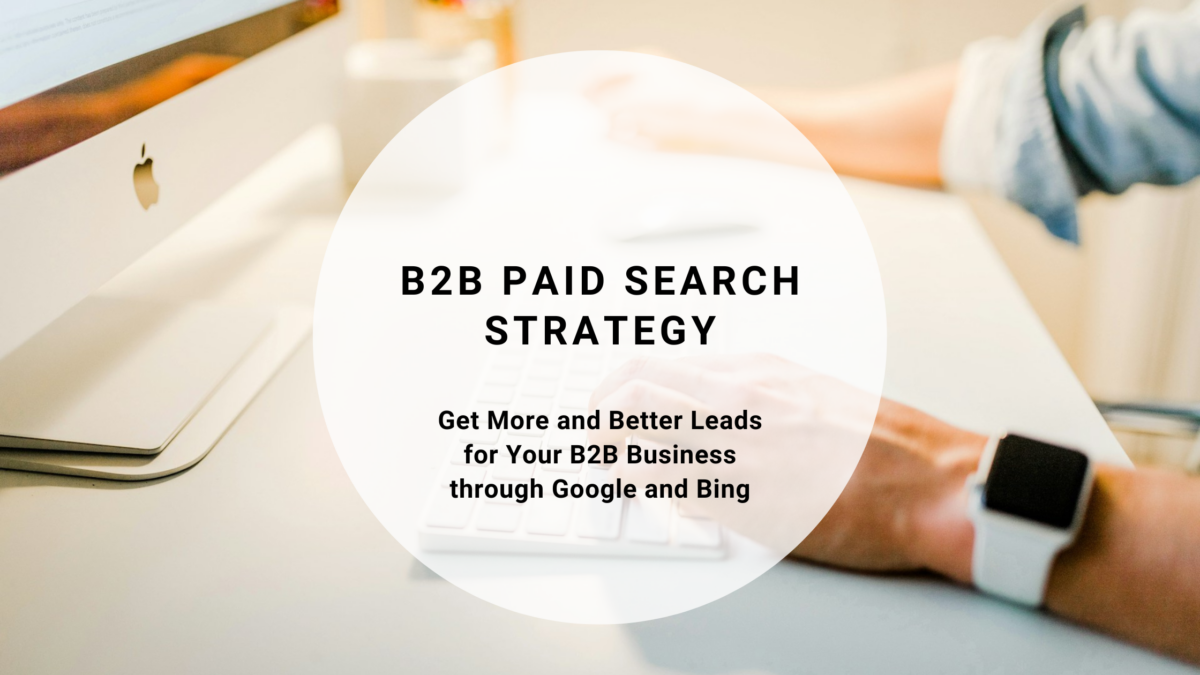In the competitive landscape of B2B marketing, having a solid paid search strategy is a must. Unlike B2C, where the focus is often on quick sales and large audiences, B2B paid search strategies demand a more nuanced approach to attract high-value leads and drive substantial ROI.
This blog post will guide you through crafting an effective B2B paid search strategy, covering everything from keyword selection to analytics and ongoing campaign optimization.
Understanding B2B Paid Search
B2B paid search involves using advertisements on search engines like Google and Bing to target business clients. These ads appear at the top of search results, capturing attention and driving clicks from potential leads. Unlike B2C, B2B paid search focuses on longer sales cycles, higher transaction values, and a smaller, more targeted audience.
Keyword Strategy
Research
Effective keyword research is the key pillar of a successful B2B paid search strategy. Utilize tools such as Google Keyword Planner, SEMrush, and Ahrefs to discover keywords relevant to your industry. Focus on long-tail keywords that indicate a clear intent to purchase or inquire about a B2B service or product.
Intent
Understanding search intent is crucial. B2B buyers often search for solutions to specific problems. Keywords like “Enterprise CRM Software” or “Commercial Dishwasher for Office” reflect a high purchase intent. Prioritize these over broader, less targeted keywords.
Competitor Analysis
Analysing competitors’ keywords can provide valuable insights. Use tools like SpyFu or SEMrush to see which keywords your competitors are bidding on. This can help you identify gaps in your strategy and discover new keyword opportunities.
If you want to learn more about Keyword Research for B2B, have a look at this article on how to find the best keywords for your business.
Crafting Effective Ad Copy
Headlines
Your ad headlines should be compelling and relevant. Include keywords to ensure they match the searcher’s intent. For example, “Top Enterprise CRM Solutions” directly addresses what the searcher is looking for.
Ad Text
Create engaging and informative ad text that highlights your unique selling points (USPs). Emphasize benefits such as “Boost Your Sales by 30%” or “Trusted by 500+ Enterprises.” Include a strong call-to-action (CTA) like “Get Your Free Demo Today.”
Ad Extensions
Utilize ad extensions to enhance your ads. Sitelink extensions can direct users to specific pages, callout extensions can highlight key selling points, and structured snippets can provide additional information. These extensions increase visibility and click-through rates (CTR).
A/B Testing
Constantly test different versions of your ad copy to see what resonates best with your audience. A/B testing helps refine your messaging and improve overall performance.
Optimizing Landing Pages
Relevance
Ensure your landing pages align with the ad copy and keywords. If your ad promotes a “Free Demo of Enterprise CRM Software,” the landing page should provide easy access to this demo, maintaining a consistent message.
Design and UX
A user-friendly design is essential. Use clean, professional layouts with clear navigation. Ensure your landing page is mobile-friendly, as many B2B buyers may use their phones for initial research.
Content
Provide valuable content that addresses your audience’s pain points and showcases your solution’s benefits. Include case studies, testimonials, and detailed product information to build trust and credibility. These content assets can play a key role in capturing signals of interest via your upper-funnel Google Ads campaigns.
Forms
Optimize your forms for lead capture. Keep them short and straightforward, asking only for essential information. Too many fields can deter potential leads.
Leveraging Analytics and Tracking
Tools
Use tools like Google Analytics, Google Ads, and your CRM system to track and analyze performance. These tools provide insights into which keywords and ads are driving the most conversions and deals.
KPIs
Monitor key performance indicators (KPIs) such as cost per lead (CPL), conversion rate, and return on ad spend (ROAS). These metrics help assess the effectiveness of your campaigns.
Conversion Tracking
Set up conversion tracking to measure the success of your paid search efforts. This involves tracking actions such as form submissions, demo requests, and sign-ups, giving you a clear picture of your campaign’s impact.
A next-level approach would be also connect your CRM with Google Ads in order to track the quality of your leads and identify how many deals have been closed.
Optimization
Regularly analyze your data to identify areas for improvement. Adjust your bids, refine your keywords, and tweak your ad copy based on performance data to continually optimize your campaigns.
Budget Management
Setting a Budget
Determine an appropriate budget by considering factors like your industry, competition, and campaign goals. Start with a manageable budget and adjust based on performance.
AdConversion’s Google Ads Budget Calculator can help you set an initial budget.
Bid Strategies
Choose the right bid strategy for your goals. Manual CPC allows for precise control, while automated bidding strategies like Target CPA (cost per acquisition) can optimize bids for conversions. If you start an account from scratch, I highly recommend starting with manual CPC first.
ROI Calculation
Regularly calculate your ROI to ensure your paid search efforts are profitable. Compare the revenue generated from your campaigns to the total ad spend to assess effectiveness.
Common Challenges and Solutions
High CPC
High CPC (cost per click) can be a challenge in competitive industries. To manage costs, focus on long-tail keywords, improve your Quality Score, and refine your targeting.
Low Conversion Rates
If your conversion rates are low, review your landing pages and forms. Ensure they provide a seamless user experience and address the needs of your audience.
Ad Fatigue
Ad fatigue occurs when users see the same ads repeatedly. Rotate your ad creatives regularly and experiment with new messaging to keep your ads fresh and engaging.
Conclusion
A well-executed B2B paid search strategy can significantly boost lead generation and ROI. By focusing on keywords with high commercial intent, crafting compelling ad copy, optimizing landing pages, and leveraging analytics, you can create a strategy that drives sustainable results.
